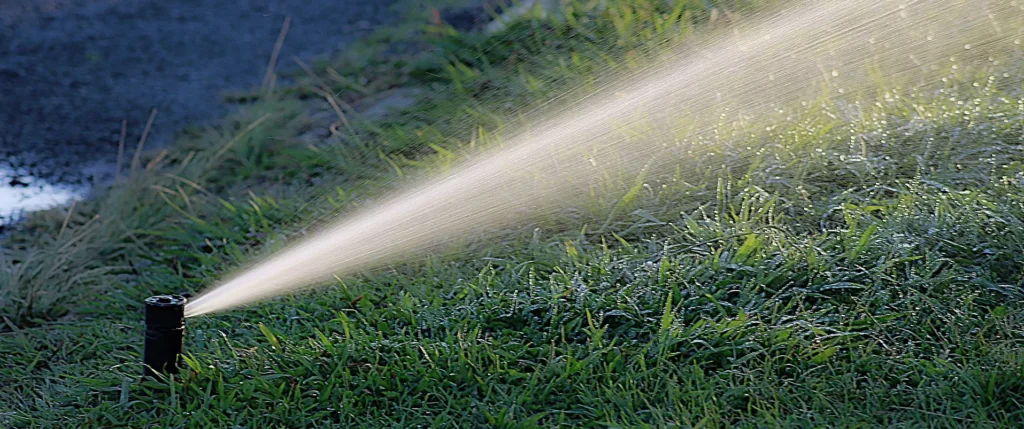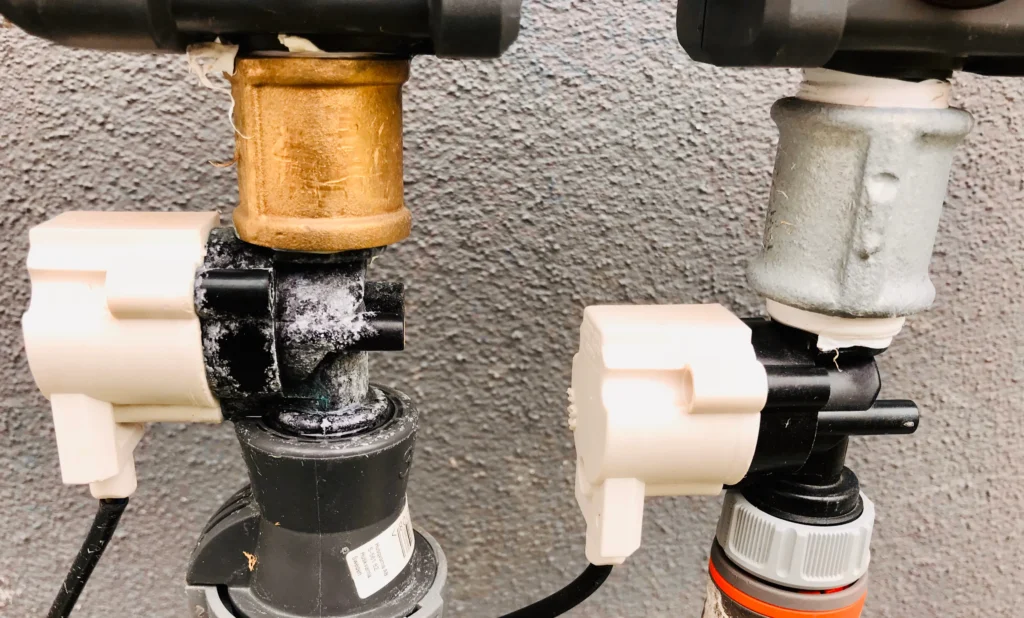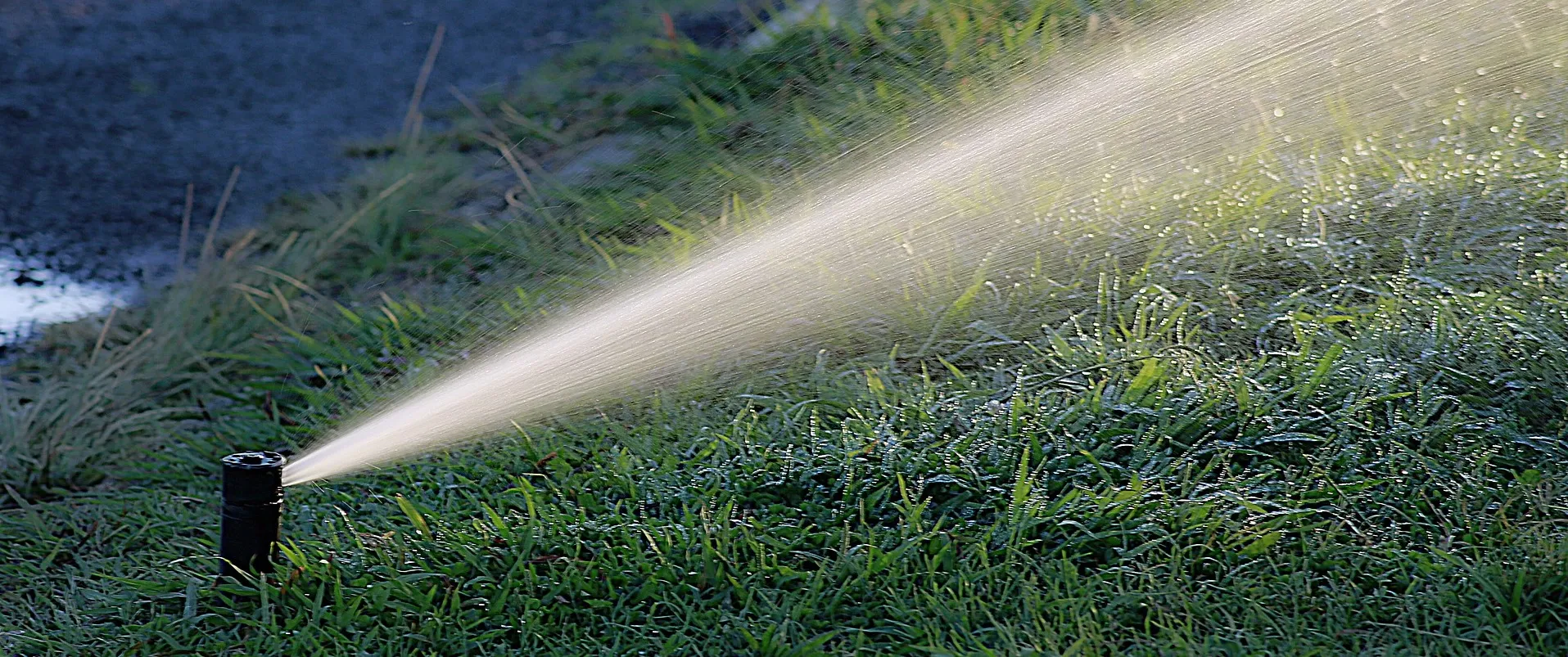If you have a beautiful garden you want to keep plants healthy and strong, hence you probably need to water them during weeks of hot summer days. Irrigation is the answer for this.

Irrigation can be performed manually by daily standing outside in your garden watering each plant individually with a hose as well as by irrigating with a mobile sprinkler that you position on different spots in the garden in order to reach full coverage. Of course this manual process is quite relaxing and makes you enjoy the beauty of your garden every day but on the other hand it also means you have to a) remember it every day and b) reserve a time slot every morning and/or evening for watering which can take up to 30 minutes according to your garden‘s size. Especially during a working week one might not have time to water every day as there are also lots of other daily todos in and around the house and you might also want to spend the rare spare time with your family rather than with watering the garden.
To solve this, there are many smart irrigation systems in the market which you can buy, install and automate watering. You can install sprinklers below ground all around you garden to ensure full coverage of the garden. Also very often, they provide sensors for sensing the humidity of the soil to ensure efficient watering plus they combine with weather data from the internet in order to determine when to water and when not. These smart irrigation systems come for a relatively high price but what from my point of view is most annoying – very often the manufacturers want to lock you into their system so once you’ve bought a smart valve or pump from the provider, you also need to buy the sensors and further valves from the same provider in order to make it work as an integrated solution. Some even come with their own proprietary “hub” which needs to be bought additionally in order to connect the devices and sensors of one provider with each other which results in an isolated solution where no other provider can join in.
To overcome these disadvantages, I decided to build my own smart irrigation solution which is much cheaper and open, so I can combine sensors and actors from different providers as well as self-made ones to a solution that fits my requirements best. For that, I needed a) the logic to decide and control when and how to water and b) the hardware consisting of sensors to sense condition of the plants and actors for starting / stopping the irrigation.
Starting with the logic there are different ways to create and host the logic that starts / stops irrigation based upon data from different sensors and services. I decided to put the logic in the cloud but you could also put the logic locally on any simple local server. Also, I decided that for this easy start project I will stick to the premise to keep the solution as simple as possible, hence I did not code something on my own but used simple If-this-than-that applets on IFTTT.com to set up the logic.
For the hardware side – sticking to the central premise of keeping the easy start solution as simple as possible – I realized for myself that the most simplistic and cheap version of an actor that turns water on / off is a water proof magnetic valve designed for outdoor use operated at 230 V AC mains voltage (you can get such valve already for about 10 €) which is being turned on / off via a smart plug. Just make sure to buy magnetic valves which are closed by default and open only when voltage is being applied so you just have to turn the smart plug only on when irrigation shall start – otherwise you would have to keep the power turned on all day except for the 30–45 min. of watering. For the WiFi smart plug we just have to make sure it works with IFTTT.com so that you can turn it on / off via an IFTTT action (cheap compatible WiFi smart plugs also already start at about 10 € each). I have split the water outlet in the garden into two separate water circuits using a V-valve (to make sure there is enough water pressure for watering the whole garden). Each water outlet then gets attached a distinct magnetic valve in order to be able to control the two water circuits separately.

For switching the two magnetic valves on / off separately, I also needed two separate smart plugs. These WiFi smart plugs I plugged into power outlets in my garage which are close to the water outlets outside in the garden. That’s pretty much it from the hardware actor side. The rest is pulling power wires from the garage to the magnetic valves (make sure to use IPX protection for the cable connectors and ask an electrician to check everything is wired correctly as we operate outside with high voltage), connecting the smart plugs to your home WiFi as well as configuring them to be turned on / off via IFTTT.com and finally installing irrigation pipes below ground with sprinklers installed for watering the lawn (water circuit 1) and hoses for drip irrigation above ground for watering the bushes, flowers and trees(water circuit 2).
With this, the first super simplistic version of your automated irrigation solution is ready to be operated. You can now define one applet per each water circuit on IFTTT.com which turns on your water valves at a certain time every day (use Date & Time trigger) and turns it off for example 30 minutes after.
Hope you’ve enjoyed this story – try it out! If you are interested in more details – please respond to this story. Of course this is just a super simple version that does not take into account the weather, the humidity, the condition of the soil etc.


No responses yet